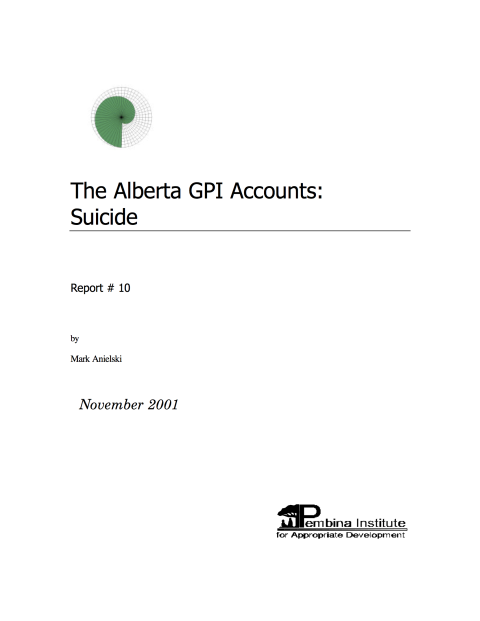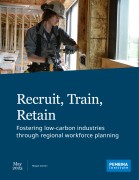This is one of 28 reports that provide the background for the Genuine Progress Indicators (GPI) System of Sustainable Well-being Accounts. It explains how we derived the index that was earlier published in Sustainability Trends 2000: The Genuine Progress Statement for Alberta, 1961 to 1999.
The document examines the trends in suicide by Albertans between 1961 and 1999. Suicide is used as a measure of the mental health of Albertans as part of a suite of 22 societal and human health indicators in the Alberta GPI accounts. Suicide may or may not be a good indicator of the mental health of individuals, however, it does provide a reasonable proxy in the absence of a more robust accounting of mental health. The report identifies a trend of increasing numbers of suicide and a high incidence of suicide among men aged 10 to 49, particularly in Calgary. The report looks at the economic and social factors that contribute to the decision of individual men and women to attempt and commit suicide. Understanding what motivates individuals to contemplate and attempt suicide is a complex issue. GPI accounting considers suicide rates as a measure of human health and even a sign of healthy communities and social cohesion and so they are included in the accounting framework for measuring genuine well-being and progress. Estimated health costs related to suicide have also been considered as a regrettable social cost incorporated in the GPI net sustainable income estimates, as an adjustment to GDP (personal consumption expenditures.







